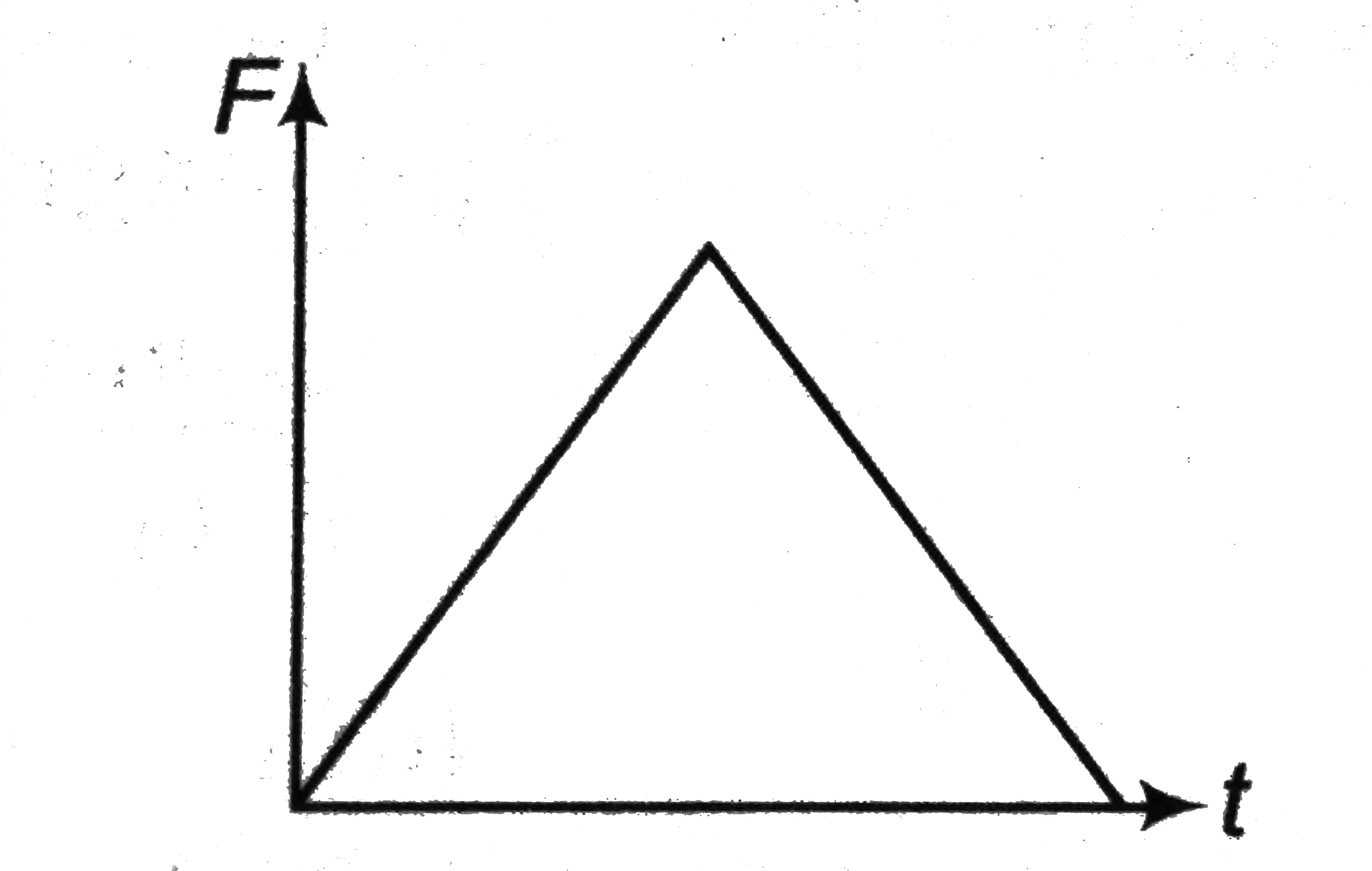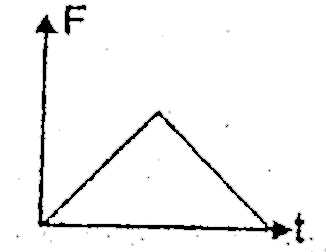If a particle is moving along straight line with increasing speed, then
Its acceleration is negative
Its acceleration may be decreașing
Its acceleration is positive
Both (2) & (3)
The correct Answer is:B
To solve the question, "If a particle is moving along a straight line with increasing speed, then," we need to analyze the implications of the particle's motion.
1. Understanding Speed and Velocity:
- Speed is the magnitude of velocity. When we say a particle is moving with increasing speed, it implies that its velocity is also increasing in magnitude.
- Since the motion is along a straight line, we can treat speed and velocity as equivalent in this context.
Hint: Remember that speed is a scalar quantity, while velocity is a vector quantity that includes direction.
2. Defining Acceleration:
- Acceleration is defined as the rate of change of velocity with respect to time. Mathematically, it is given by:
a=dvdt
- Here, a is acceleration, dv is the change in velocity, and dt is the change in time.
Hint: Acceleration tells us how quickly velocity changes. A positive acceleration indicates an increase in velocity.
3. Analyzing Increasing Speed:
- If the speed (and thus the velocity) of the particle is increasing, it indicates that the acceleration must be positive. This is because a positive acceleration results in an increase in velocity over time.
Hint: Recall that if acceleration is negative, the velocity would decrease, contradicting the condition of increasing speed.
4. Considering the Nature of Acceleration:
- The question also mentions that the speed is increasing, which means that while the acceleration is positive, it could either be constant or decreasing. Thus, it is possible for the acceleration to be positive but not necessarily constant.
Hint: A decreasing acceleration can still be positive; it just means that the rate of increase in velocity is slowing down.
5. Evaluating the Options:
- Option 1: Acceleration is negative. (Incorrect, as we established that acceleration must be positive for speed to increase.)
- Option 2: Acceleration may be decreasing. (Correct, as acceleration can be positive and still decrease.)
- Option 3: Acceleration is positive. (Correct, since the speed is increasing.)
- Option 4: Both 2 and 3. (Correct, as both statements are true.)
6. Conclusion:
- The correct answer is option 4, which states that both 2 and 3 are correct.
Final Answer:
The correct answer is Option 4: Both 2 and 3.
---
- Speed is the magnitude of velocity. When we say a particle is moving with increasing speed, it implies that its velocity is also increasing in magnitude.
- Since the motion is along a straight line, we can treat speed and velocity as equivalent in this context.
- Acceleration is defined as the rate of change of velocity with respect to time. Mathematically, it is given by:
a=dvdt
- Here, a is acceleration, dv is the change in velocity, and dt is the change in time.
- If the speed (and thus the velocity) of the particle is increasing, it indicates that the acceleration must be positive. This is because a positive acceleration results in an increase in velocity over time.
- The question also mentions that the speed is increasing, which means that while the acceleration is positive, it could either be constant or decreasing. Thus, it is possible for the acceleration to be positive but not necessarily constant.
- Option 1: Acceleration is negative. (Incorrect, as we established that acceleration must be positive for speed to increase.)
- Option 2: Acceleration may be decreasing. (Correct, as acceleration can be positive and still decrease.)
- Option 3: Acceleration is positive. (Correct, since the speed is increasing.)
- Option 4: Both 2 and 3. (Correct, as both statements are true.)
- The correct answer is option 4, which states that both 2 and 3 are correct.
The correct answer is Option 4: Both 2 and 3.
Topper's Solved these Questions
- MOTION IN A STRAIGHT LINEBOOK - AAKASH INSTITUTE ENGLISHCHAPTER - MOTION IN A STRAIGHT LINEEXERCISE - ASSIGNMENT (SECTION - B)
33 Videos
- MOTION IN A STRAIGHT LINEBOOK - AAKASH INSTITUTE ENGLISHCHAPTER - MOTION IN A STRAIGHT LINEEXERCISE - ASSIGNMENT (SECTION - C)
36 Videos
- MOTION IN A STRAIGHT LINEBOOK - AAKASH INSTITUTE ENGLISHCHAPTER - MOTION IN A STRAIGHT LINEEXERCISE - EXERCISE
29 Videos
- MOTION IN A PLANEBOOK - AAKASH INSTITUTE ENGLISHCHAPTER - MOTION IN A PLANEEXERCISE - Assignement section -J (Aakash Challengers Questions)
7 Videos
- MOTION IN STRAIGHT LINEBOOK - AAKASH INSTITUTE ENGLISHCHAPTER - MOTION IN STRAIGHT LINEEXERCISE - Assignment (SECTION - J)
2 Videos
Similar Questions
A particle is moving along a straight line with increasing speed. Its angular momentum about a fixed point on this line :
View SolutionFor a particle moving in straight line with increasing speed the appropriate sign of acceleration a and velocity v can be:
View SolutionAt any instant, the velocity and acceleration of a particle moving along a straight line are v and a. The speed of the particle is increasing if
View Solution
The velocity displacement graph of a particle moving along a straight line is shown in figure.
Then the acceleration displacement graph is.
View SolutionThe x-t graph of a particle moving along a straight line is shown in figure

The speed-time graph of the particle is correctly shown by
View SolutionThe variation of velocity of a particle moving along a straight line is shown in the figure. The distance travelled by the particle in 4s is

View SolutionThe velocity - time graph of a particle moving along a straight line is shown in the figure given below
The displacement of the particle in 5 second is

View SolutionThe net force acting on a particle moving along a straight line varies with time as shown in the diagram. Force is parallel to velocity. Which of the following graph is best representative of its speed with time? (Initial velocity of the particle is zero)

View SolutionThe force acting on a particle moving along a straight line varies with time as shown in diagram.

Which of the following graphs is best representative of its speed and time graphs. Initial velocity the particle is zero.
View SolutionThe force acting on a particle moving along a straight line varies with time as shown in diagram.

Which of the following graphs is best representative of its speed and time graphs. Initial velocity the particle is zero.
View Solution
